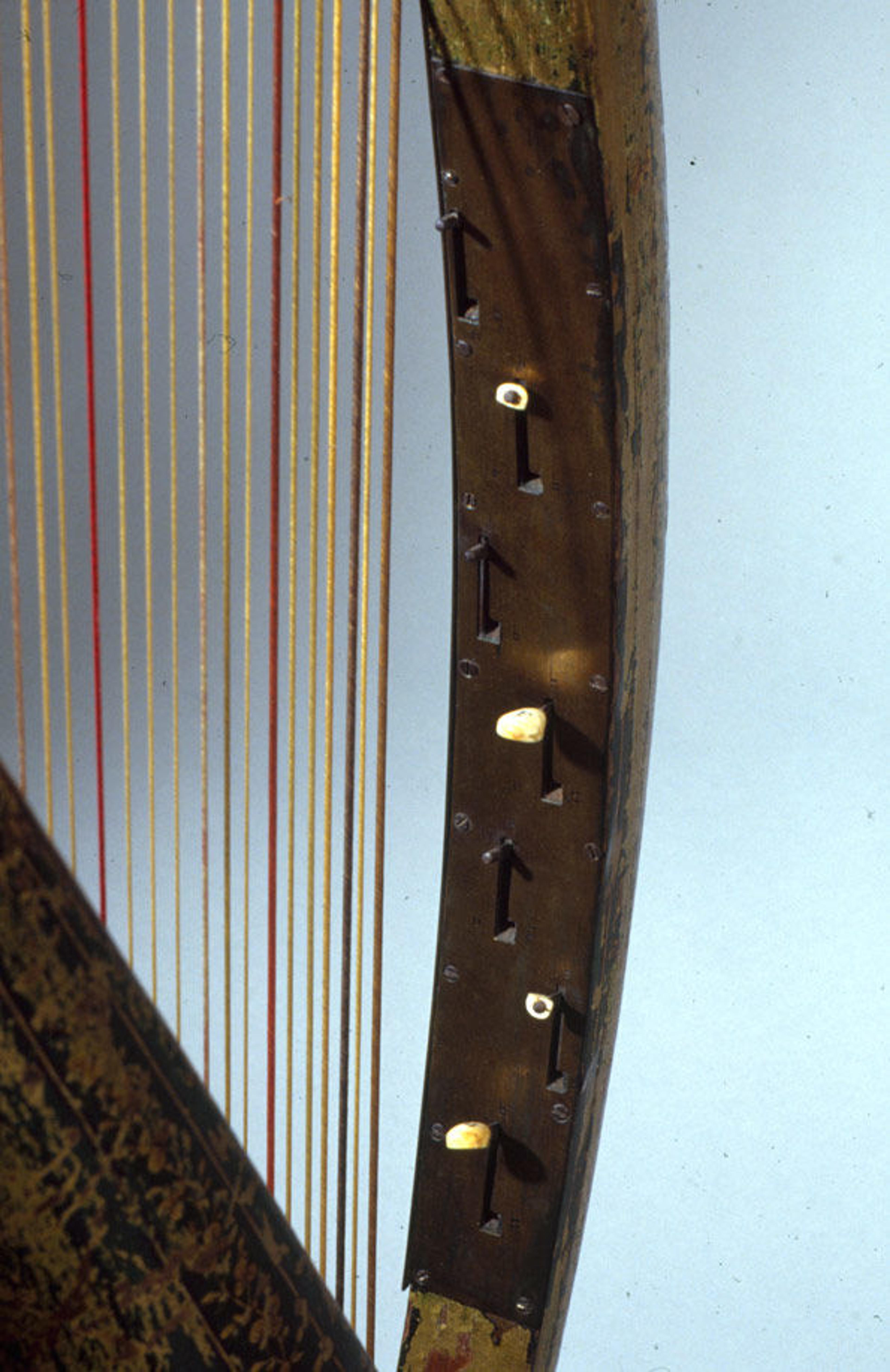
John Egan. Portable Harp, 1819. Wood, various materials. The Metropolitan Museum of Art, New York, The Crosby Brown Collection of Musical Instruments, 1889 (89.4.1083)
«Musical instruments have the power to transcend their roles as performance objects to become symbols of love, war, ritual, identity, and even politics. In Ireland, for instance, the harp has been an important emblem of national identity for more than eight hundred years. The harp was used during the Middle Ages to accompany epic tales for entertainment, as well as to impart history. Later, traveling musicians moved about the country and used the instrument to impart news, share songs, and tell stories.»
The harp was associated with the first High King of the Irish, Brian Boru (ca. 941–1014); a harp purported to belong to him is still preserved at Trinity College in Dublin. The Irish harp's small shape made it portable and ubiquitous. It appeared on the Irish flag from 1642 to 1916, is still used as the symbol on the Irish coat of arms (as well as that of the United Kingdom to represent Ireland), and even appears as a logo for Guinness, the iconic Irish beverage company—a symbol prominently displayed on bottles and cans sold around the world.
In the early nineteenth century, during the movement for Irish independence, the harp became an important emblem of national unity. Great efforts were made to preserve and revive the older traditions of harp playing that were waning at that time, and organizations formed for these purposes. John Egan, Ireland's most important harp maker at the time, developed a harp that took on the shape and size of the traditional Irish harp.
Egan's portable Irish harp also had a mechanism in the pillar that allowed the player to change the harp's tuning, in order to play in different keys. Instead of foot pedals, as used on orchestral harps, the player of the portable harp could use small buttons, known as ditals, to activate a mechanism in the pillar of the harp. The linkages in the pillar turned small discs with pins that pressed up against specific strings to retune the harp.
The Metropolitan Museum of Art is home to Egan's portable harp, serial number 1. A very important instrument made by Egan in 1819, the harp is gilt with green painting on the soundboard and gold floral decoration. The ditals—some retaining their original ivory buttons—are found on the inside of the pillar. The Egan invention was highly successful, and was eventually copied by generations of makers that followed.

John Egan. Portable Harp (detail view of ditals), 1819. Wood, various materials. The Metropolitan Museum of Art, New York, The Crosby Brown Collection of Musical Instruments, 1889 (89.4.1083)